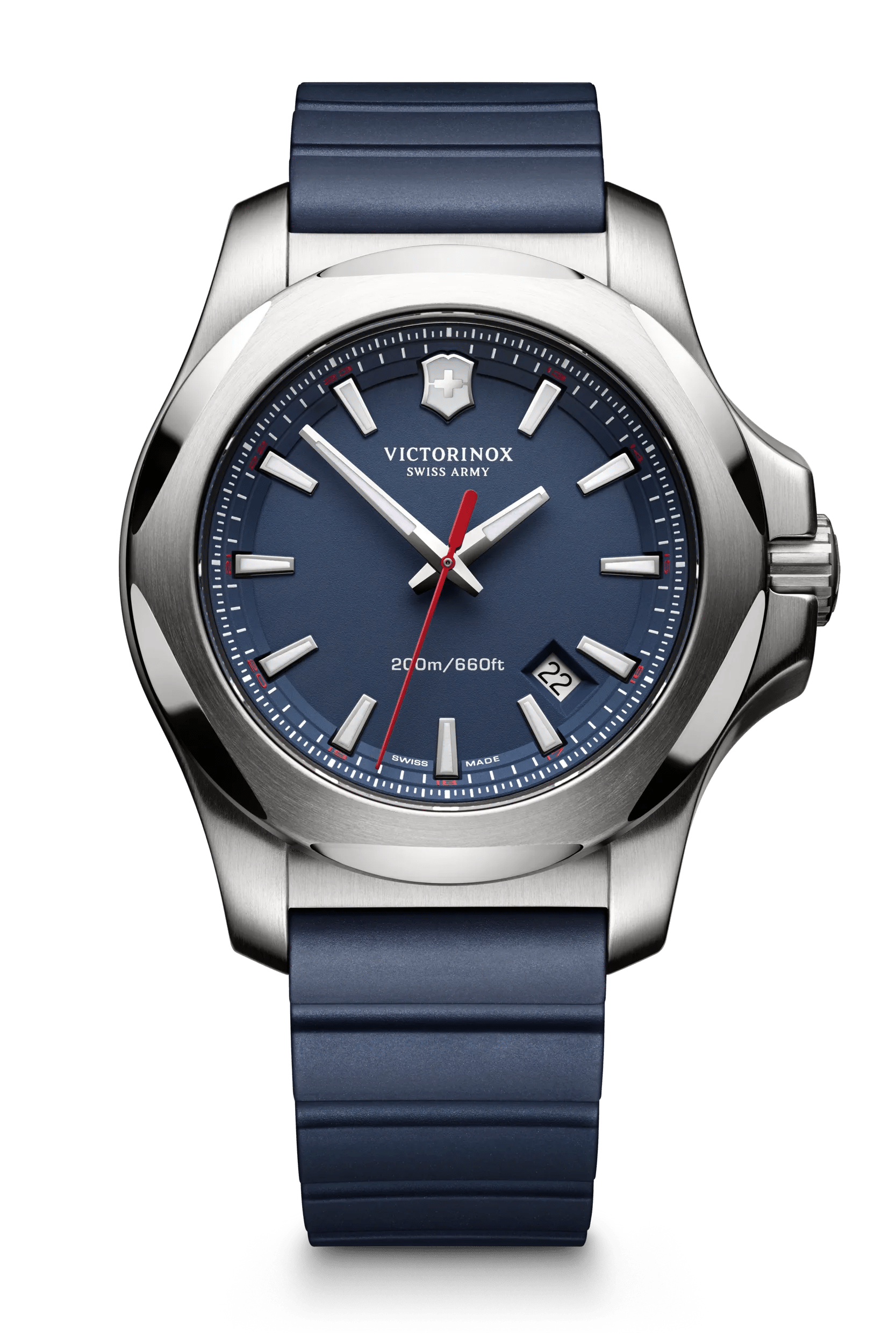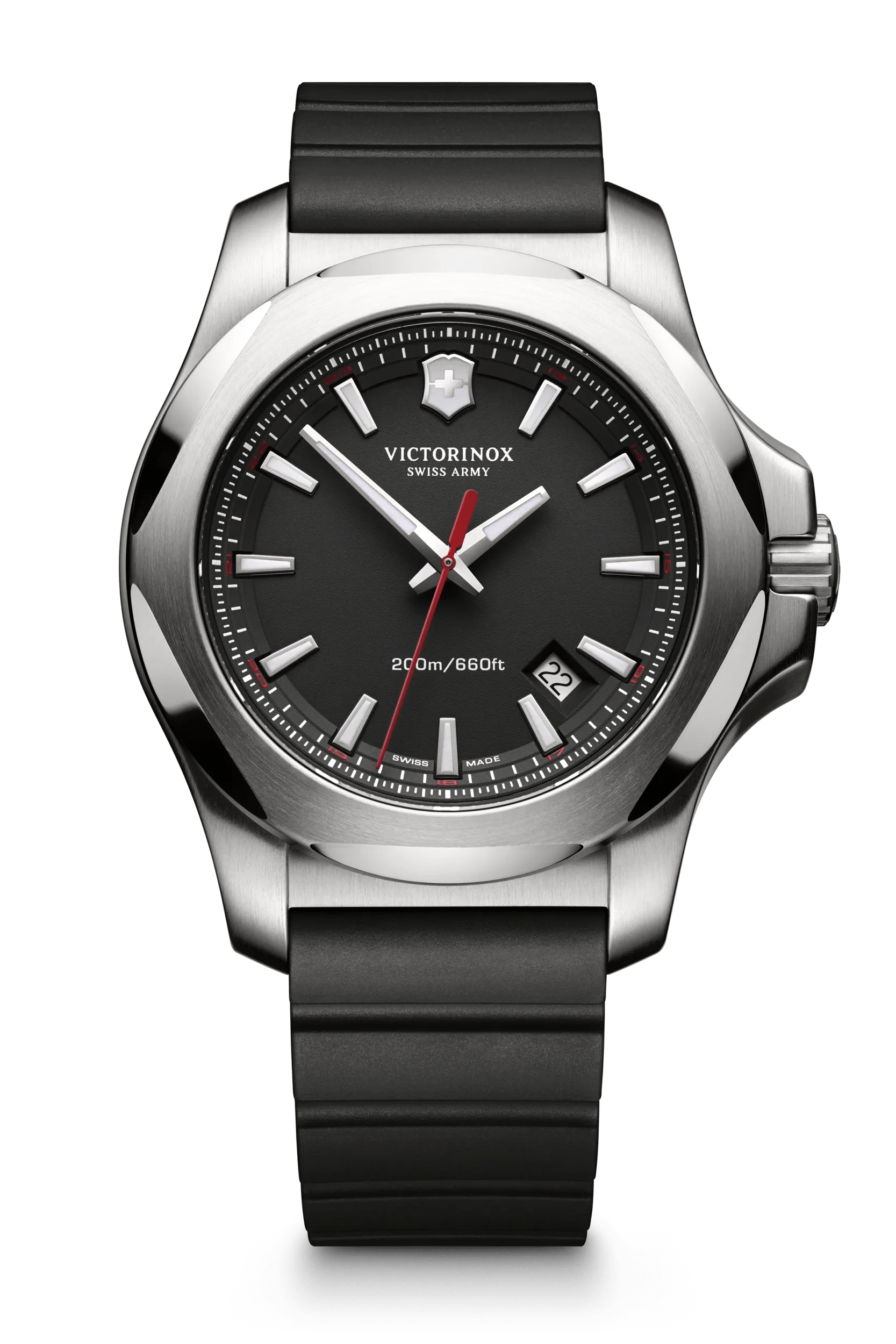The future of stainless steel
Victorinox y ECAL innovan en el material del reloj I.N.O.X.
Para explorar las posibilidades del acero inoxidable en la industria del reloj, queríamos preguntarle a la nueva generación de diseñadores su opinión sobre este material tradicional. Entonces nos encantó la idea de colaborar con una de las escuelas de diseño más famosas e innovadores del mundo: la reconocida Escuela Cantonal de Arte de Lausana, en una palabra: ECAL. Se tomaron estudiantes de todo el mundo de áreas como la cirugía médica, la nanotecnología o la biomímesis, y aplicaron este conocimiento al mundo de los relojes.
Una historia de tradición e innovación
Con el pasar de los años, hemos acumulado bastante experiencia en el trabajo con acero inoxidable. Hace aproximadamente 100 años éramos la primera empresa de cuchillos en el mundo en trabajar con este material. Esta innovación marcó un punto de inflexión tan importante en la calidad de nuestros productos que en 1921 integramos el nombre en inglés del acero no oxidable “inox” a nuestra marca.
Desde entonces, el acero inoxidable ha sido parte esencial de nuestro trabajo. Fue la experiencia lo que nos condujo al mundo de los relojes. Con toda nuestra experiencia, nos pareció natural comenzar a fabricar relojes. Y es así como nació el legendario I.N.O.X.: un homenaje a un material que sigue sorprendiéndonos con su ingenuidad.
Únase a nosotros para explorar las fascinantes posibilidades del acero inoxidable.
Acero inoxidable: 1 material, 11 innovaciones
Cuando los rayos de luz se concentran y luego son desviados por un material reflectante, se crea la luz cáustica. Por ejemplo, la reflexión de la luz en una piscina. Al aplicar un grabado de acuerdo con los principios de la luz cáustica en la superficie de un reloj, se agrega una propiedad casi “mágica”. Imagen: imagen tomada por un estudiante, Rayform SA
El proyecto fue dirigido por Alexis Georgacopoulos, director de ECAL, y Thilo Alex Brunner, director del Máster en diseño de productos en ECAL. Ante la iniciativa de ambos, el diseñador y profesor de ECAL, Alexander Taylor, dirigió a estudiantes de todo el mundo a través de un proyecto de tres meses de descubrimiento de nuevas posibilidades para el uso del acero inoxidable.
¿Cuál es el futuro del acero inoxidable en la industria del reloj, Alexander Taylor?
¿Por qué no diseñó relojes en este proyecto sino que se concentró en el material?
Creo que los estudiantes y diseñadores deben aprender habilidades que les permitan ser multifacéticos en el enfoque y trabajar no solo con el objeto terminado, de alguna manera trabajar explorando primero las formas en las cuales podemos trabajar sin los parámetros del objeto. El carácter del objeto y la oportunidad para crear algo nuevo tanto en términos tanto estéticos como de producción serán el resultado de una cooperación con creadores y el entendimiento del diseñador para adaptar las tecnologías a una necesidad particular. Durante este proceso, inevitablemente se presentarán oportunidades más allá del informe original. Al no concentrarnos en el diseño de un reloj en particular, podemos dejar que el proceso realmente nos dé información y afecte al resultado formal.
¿Qué hace del acero inoxidable un material tan interesante con el cual trabajar?
Tiene una calidad industrial tan bella y altamente funcional, de alta tecnología pero a la vez tan familiar. Es un material con capacidad para estimular los sentidos y se asocia con rendimiento, estructuras y productos pioneros. Sin embargo, con este proyecto, ilustramos cómo se puede tomar un material que es tan familiar y aun así proponer maneras absolutamente nuevas de fabricarlo o procesarlo.
Sobre Alex Taylor, galardonado diseñador británico, profesor en ECAL
Share via e-mail
Success!
Your message was successfully sent.
Error!
There was an error while trying to send your message. Please try again.
Your product has been added to your cart


